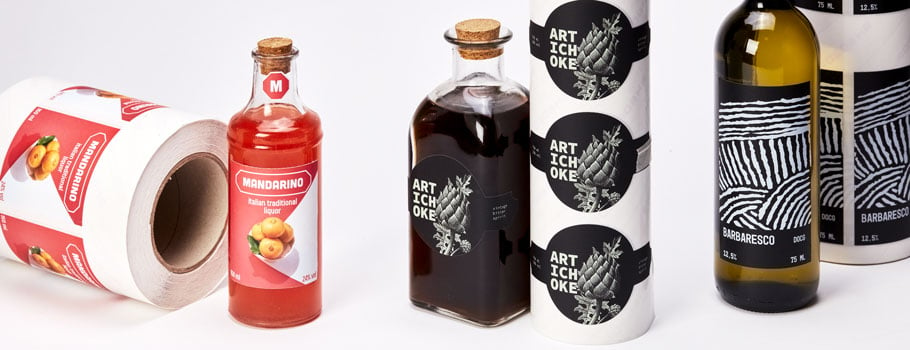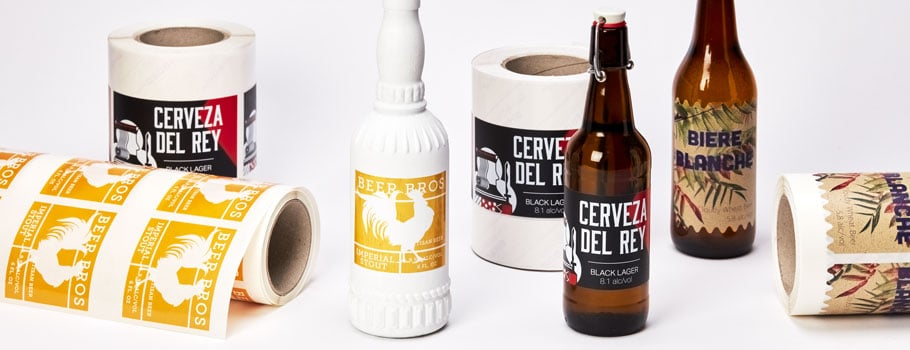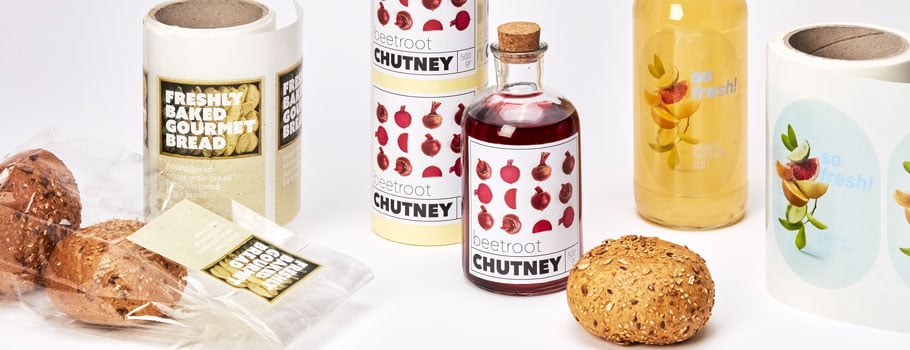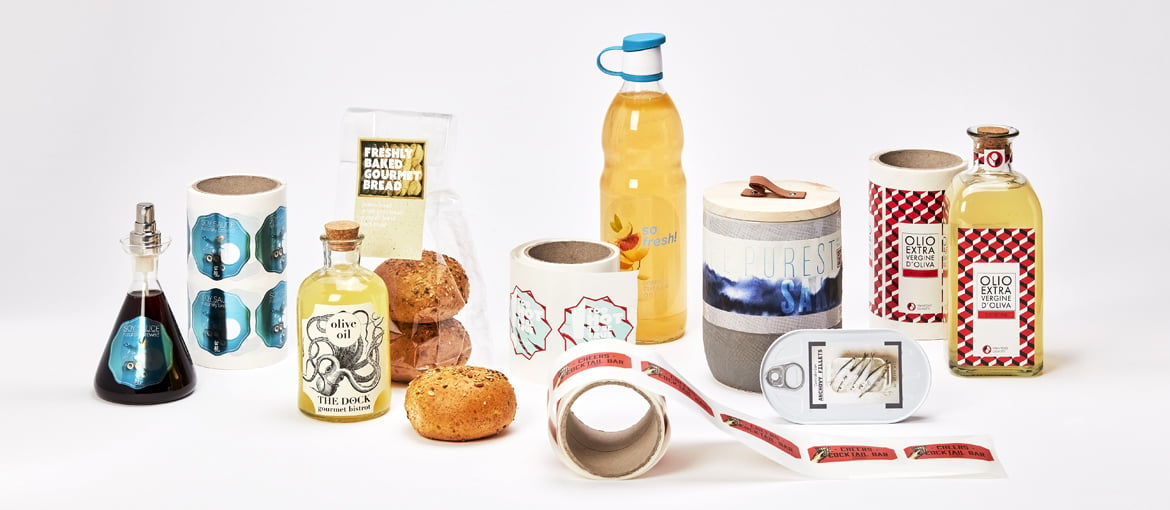As well as an essential way of providing consumers with the product information that must be supplied by law, self-adhesive labels for packaged food and drink products are also a crucial marketing tool for companies in the food and winemaking sector.
Quality labels can make an item stand out from the rest, grabbing the attention of customers and providing them with important information on the company and on the packaging’s contents. In addition, they can influence consumers’ purchasing choices, and particularly those people who take spur-of-the-moment decisions on supermarket aisles based on a product’s packaging.
The numerous annual prizes dedicated to the companies that produce the best label in their sector, such as the Label of the Year competition at the Vinitaly trade fair, underline the importance of this packaging element from a commercial viewpoint.
For all these reasons, it is essential to entrust the design of your self-adhesive labels to a team of professionals or a creative agency that can align the concept, graphic design and text with a precise brand strategy. Indeed, the style of the stickers should reflect the company’s brand identity and the type of clientele it aims to attract.
Another aspect to bear in mind is the material the labels are printed on: it should have certain technical characteristics depending on the product in question. Choosing one paper type over another will send a particular message to the consumer: a label with special finishes, for example, will communicate to the public that this is a high-quality food or drink, made with the finest ingredients and with a medium-to-high price tag.
Through the Pixartprinting website you can print a huge range of roll labels for food and drink packaging. If you don’t know where to start, here is a brief guide to choosing the best food and drink labels.

Labels for drinks
Wine and spirit labels, beer labels or a Champagne label should instantly transmit the product’s value to the client, whether they are an end customer or the owner of a restaurant, bar or winery.
The higher the price bracket the drink in question is aiming for, the more refined the self-adhesive paper should look. Pixartprinting’s new Special Finish Labels with a gold- or silver-coloured laminated effect and embossed printing, for example, are ideal for giving an elegant look to fine wines or spirits, to ensure they capture the attention of a demanding public.
Another very important aspect to consider is whether the material is suited to damp glass surfaces, and resistant to low temperatures and to submersion in water and ice, to avoid the label coming off the bottle before or during use. Pixartprinting has a vast range of high-performance self-adhesive papers, such as the Black Pulp-Dyed Paper or the Betulla Laid Paper, which are perfect for printing striking stickers that can cope with sudden drops in temperature.
For craft beverages, the packaging must effectively convey the handcrafted nature of the product and the natural ingredients. Hay Paper is particularly suited to this aim, thanks to the imperfections in the stock which give it a natural and eco-friendly appearance.

Food labels
Like drink labels, food packaging labels also have the job of guiding purchasers to choose one product over another, and must have certain technical features to ensure they last a long time.
For bottled and canned goods like bottles of oil and vinegar, jams or vegetables preserved in oil, it is recommended to use a stain-resistant and greaseproof paper that will not be damaged by vegetable oils and fats. The Laid Greaseproof Paper, for example, is perfect for printing labels for glass bottles and food containers, and gives the packaging a sophisticated tactile effect.
If, on the other hand, you want to bring out the colour and purity of the product, you can create ‘nude effect’ packaging by choosing Polypropylene Deluxe Transparent labels, which you can combine with a colourful graphic layout for a vibrant result, or a neutral colour palette for a more toned-down look. Once again, the option you choose will depend on the type of buyer you want to attract: if your target market is young, you could be more daring and use humorous artwork, while for older groups of consumers you should use more traditional visuals.

Using labels creatively
From label-based marketing campaigns to smartphone apps that provide additional information on the product, there are myriad creative ways to use this little sheet of self-adhesive paper.
What undoubtedly makes a sticker on the back of an item unique is a good story: you can use various storytelling techniques to add short tales, anecdotes and poems to your labels, thereby providing an interesting description of your product and involving your audience with a captivating narrative. In addition, the name chosen for a food or wine can evoke the flavours, aromas and colours of the region it comes from.
With this in mind, we’ve decided to end this article with a quote from advertising guru Gavino Sanna, who describes his second profession as a vine-grower in his native Sardinia as follows:”I bought the vines, built the winery, and designed the bottles, all black, like Sardinian ladies queueing up to go to Mass. I enjoyed producing the labels, with patterns from Sardinian carpets and the colours of our traditional dress, and poems about the sun and the sea on the back. The names are typical of a publicist: Buio [Dark] for the younger Carignano, and Buio Buio [Dark Dark] for the longer aged one.
Here at Pixartprinting, we hope you can take inspiration from these words and start designing your own original and appealing content for your food and drink labels.

